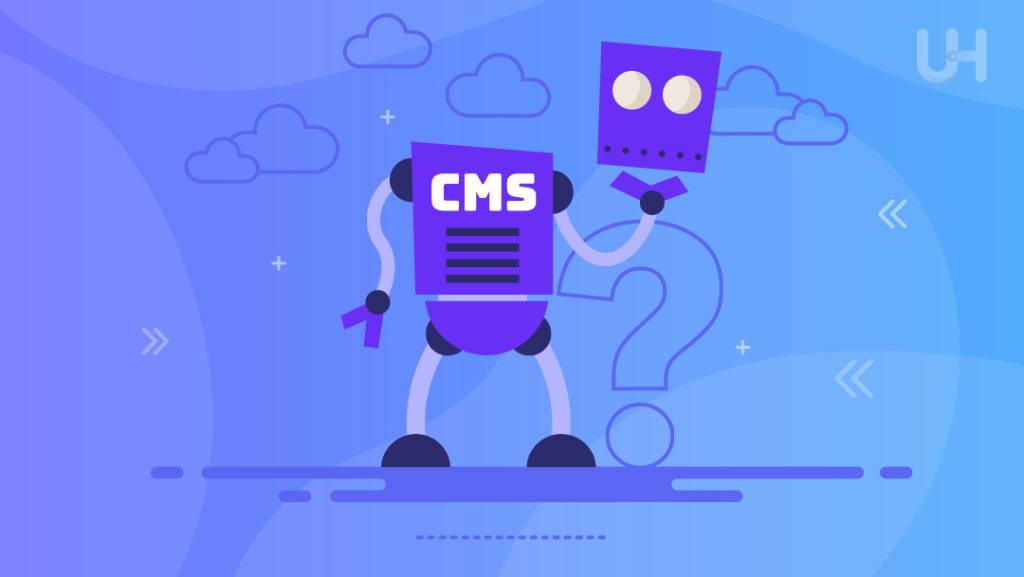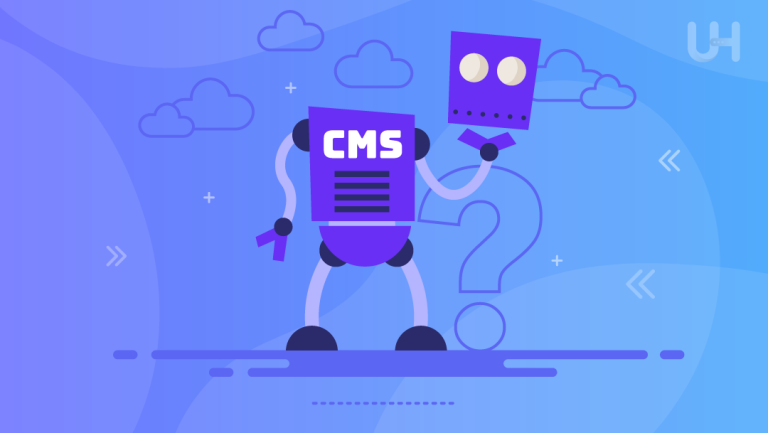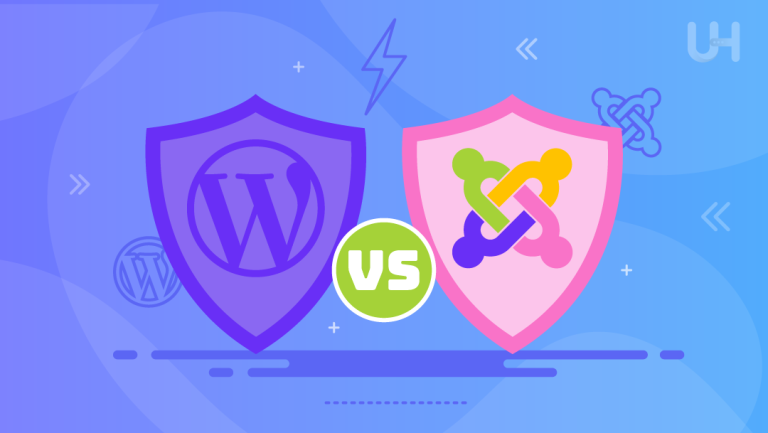Headless WordPress is an innovative way to amplify the CMS’s capabilities. It allows you to decouple your website’s content database from the display for greater flexibility, easier distribution, and higher performance. In this article, we explain what is headless WordPress and discover its popular uses. So, stay tuned!
Keeping up with the constantly evolving world of the Internet of Things (IoT) can be challenging for content developers and programmers as they scramble to keep up with the new developments. Repackaging content from a traditional WordPress environment for multiple client-side endpoints can severely strain resources. This is where headless WordPress CMS enters the picture.
What is Headless WordPress CMS?
A headless WordPress CMS is a content management system that is decoupled from the frontend. This means the content is only accessible from an API, which connects the backend to the “head” or the frontend.
A headless CMS WordPress removes restrictions on how content can be presented. It enables developers and content creators to use one source for multiple end users. For example, use the same content source for many websites, mobile apps, smartwatches, and IoT devices.
Contrary to traditional CMSs such as WordPress or Drupal that are built on a LAMP stack, a headless CMS creates and stores XML and JSON files that can be read and used by frontend frameworks like Next.js or React. This independence helps developers build, test, and deploy digital experiences for broader applications.
How Does Headless CMS WordPress Work?
A headless WordPress website uses the platform as a CMS but leverages a different head to display the content. This API-styled filing system allows developers to decouple the content from WordPress, integrate it with third-party services, and deliver it through various channels and interfaces.
Additionally, headless WordPress frees you from the shackles of using WordPress themes, which define how you present content, limiting your creativity and forcing you to think within the CMS‘s boundaries. It also stores data and serves as an API endpoint.
However, if you are new to web development and don’t have the technical know-how to create themes from scratch, WordPress themes are here to save the day. We recommend learning how to choose a WordPress theme for your website before starting, to streamline your efforts.
The Benefits of Headless WordPress CMS
While traditional WordPress is ideal for non-technical users, it restricts web developers from getting creative. Here are the primary benefits of headless WordPress for technical users.
Better Performance
Traditional WordPress renders content dynamically, meaning instead of sending a static HTML page for every request, the server constructs a new page every time. This process is slow and consumes greater server resources. A frontend application like next.js fetches content from the database, compiles it into pre-rendered HTML pages, and sends them to clients when requested. This reduces resource consumption to accelerate page load speeds.
Multichannel Publishing
While traditional WordPress allows you to publish content for standard desktops, smartphones, and tablets, you may want to optimize your website for social media, mobile apps, smart devices, and AI assistants like Alexa. A headless CMS serves as a centralized database for multiple publishing channels, for the convenience of content creators and site admins. Furthermore, when you change content on the central database, it reflects across all the connected devices.

Data Security
Traditional WordPress is prone to cyberattacks since a hacker only needs access to the login.php code to initiate a brute-force attack, overload your website to trigger a DDoS attack, or compromise a plugin to gain access. Headless WordPress prevents such malicious attempts by allowing client-side rendering, using a Content Delivery Network (CDN) to cache content, and reducing your reliance on plugins. The API-first nature of headless WordPress streamlines cybersecurity measures, preventing intrusions.
Code Reusability
In traditional WordPress, you cannot transfer data between multiple publications. While you can store and reuse content using the functions.php file, it is pretty inconvenient compared to the capabilities of a headless CMS. With headless WordPress, you can communicate with the backend using API. So, once your content is published on WordPress, it is available on every frontend framework you use. You can seamlessly reuse codes from all projects without affecting the backend.
Elevate Your Business with WordPress VPS Hosting
Looking to elevate your business website? UltaHost offers a powerful hosting solution that gives you complete autonomy over your business website. Get a customizable and scalable WordPress VPS made just for you!
The Drawbacks of Headless CMS WordPress
Like everything else in life, headless WordPress has its share of disadvantages. Here are the primary cons of headless WordPress.
Requires Coding Expertise
Headless WordPress has a steep learning curve. So, amateur web developers will need some hands-on expertise to get acquainted with the tool. Unless you are building a website that requires multichannel publishing or code reusability, you are better off using traditional WordPress.
Needs Higher Maintenance
The headless architecture is difficult to maintain as it is spread across multiple servers, databases, and environments. This consumes a lot of resources and doesn’t make sense for general business use. So, unless you need a highly customizable CMS without a frontend website, you should stick to using traditional WordPress.
Complicates Hosting Workflows
With a headless CMS, you need two hosting services – one each for the front and the back ends. You need PHP hosting for the backend and WP hosting for the frontend. This doubles the time and effort required for maintenance.
When Should You Use a Headless CMS WordPress
Headless WordPress isn’t for everyone. While the performance benefits make it suitable for experienced web developers, let’s walk you through some of its ideal use cases.

Build a Custom Website
If customizability is your primary concern, headless WordPress CMS is the way to go. The headless architecture offers plenty of opportunities beyond the scope of traditional WordPress. It puts the control in your hands, allowing you to bring your creative ideas to life.
Publish Content on Multiple Platforms
Decoupled WordPress lets you create omnichannel customer experiences through API integrations. You can create personalized content and push it through various online platforms for maximum traffic and reach.
How to Set up a Website with Headless WordPress?
Now that you understand the pros and cons of headless CMS WordPress and want to use it to build your website, where do you begin? Well, there is no straightforward answer as your method will vary on your technical expertise, requirements, and preferred languages, frameworks, and headless WordPress hosting plans.
You must be familiar with frontend languages like JavaScript and the WordPress REST API. Having said that, here are the two most popular methods for creating a website using headless WordPress.
Use a Plugin
WordPress plugins are excellent alternatives for writing codes yourself. While you can leverage that for headless CMSs, you will still need a basic knowledge of programming languages to work with a headless architecture. WPGraphQL is a popular plugin that lets developers turn WordPress installations into a GraphQL API. This allows developers to create custom data schemas for frontend architectures to retrieve data from your headless CMS.
Write Custom Codes
You can also write codes to implement the API, for greater flexibility and total control over the frontend. However, this is often unnecessary. So, rather than building your own frontend framework, consider using React or Gatsby.
Conclusion
A headless WordPress CMS offers several advantages if you have the technical know-how. However, the freedom comes with complexities that can be difficult to handle for novice developers. So, to sum things up, if your business requires a scalable CMS without a frontend website, go for headless WordPress. For every other use, stick to traditional WordPress.
Looking for a reliable hosting partner for your business website? Try Ultahost’s Enterprise WordPress Hosting solutions that offer exceptional flexibility, enterprise-grade tools, 24/7 security, and effortless performance, starting at just $2.90/month.
FAQ
What is a headless CMS?
A headless CMS separates the backend from the frontend. This lets you create and store content in one place and share it on multiple channels via API integration.
What is the difference between a headless and a regular CMS?
A traditional CMS is a one-stop shop for managing content on the front and back ends. A headless CMS only handles content on the backend. You need a separate frontend architecture to display the content.
Is a headless CMS just an API?
A headless CMS separates the website’s backend from the frontend, allowing web developers to create custom frontend architecture from scratch to display content via easy API integration.
Is a headless CMS just a database?
A headless CMS comprises a content database and delivery network via API. It decouples the website’s frontend from the backend for greater flexibility.
Which is the best headless CMS?
The best headless CMS is the one that meets all your requirements and you find easy to use. WordPress VIP is one of the most popular headless CMSs on the market right now.










